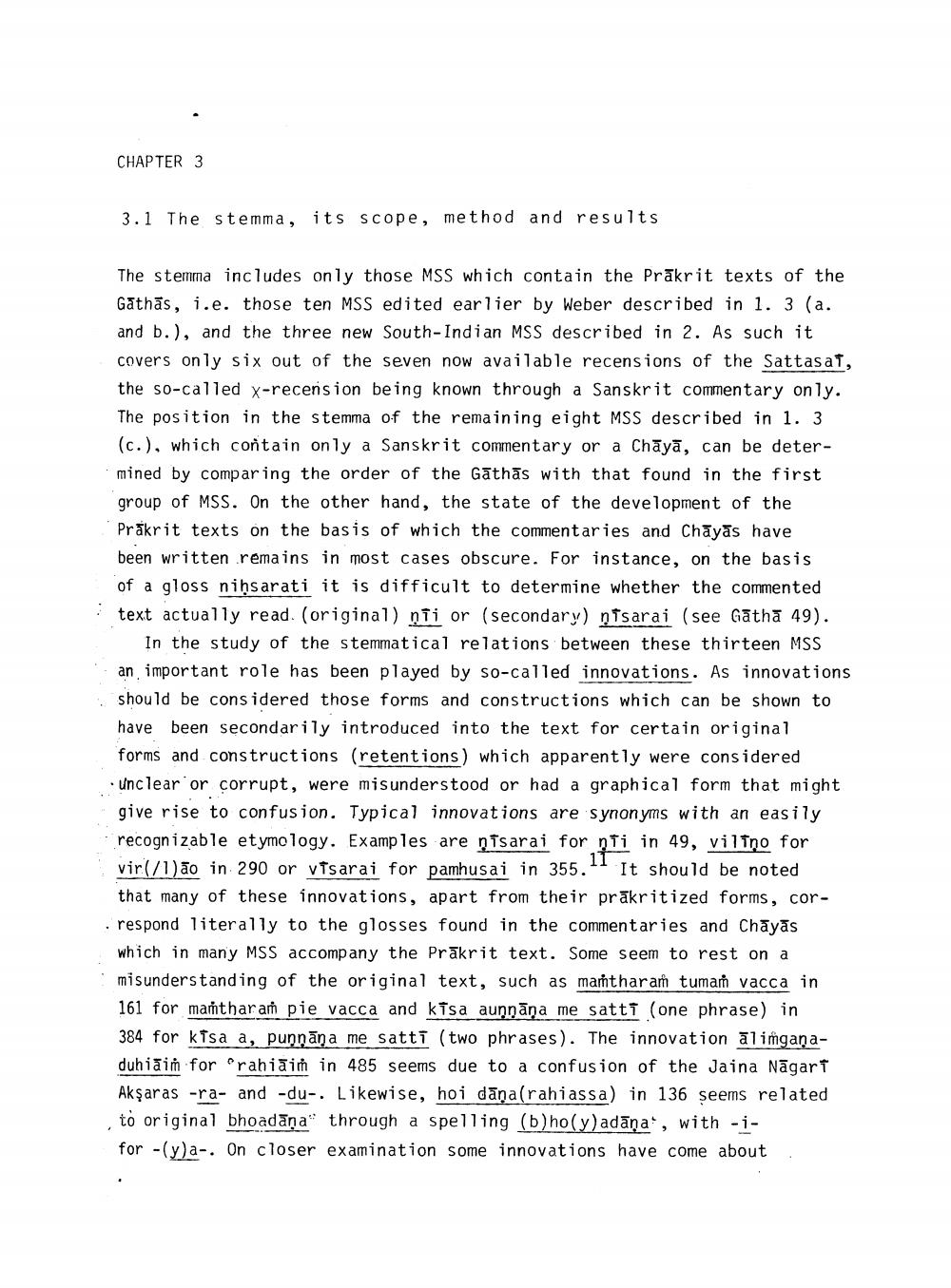________________
CHAPTER 3
3.1 The stemma, its scope, method and results
The stemma includes only those MSS which contain the Prākrit texts of the Gathās, i.e. those ten MSS edited earlier by Weber described in . 3 (a. and b.), and the three new South-Indian MSS described in 2. As such it covers only six out of the seven now available recensions of the Sattasaf, the so-called x-recension being known through a Sanskrit commentary only. The position in the stemma of the remaining eight MSS described in 1. 3 (c.), which contain only a Sanskrit commentary or a Chāyā, can be determined by comparing the order of the Gathās with that found in the first group of MSS. On the other hand, the state of the development of the Prakrit texts on the basis of which the commentaries and Chāyās have been written remains in most cases obscure. For instance, on the basis of a gloss niħsarati it is difficult to determine whether the commented text actually read. (original) nii or (secondary) ntsarai (see Gātha 49).
In the study of the stemmatical relations between these thirteen MSS an important role has been played by so-called innovations. As innovations should be considered those forms and constructions which can be shown to have been secondarily introduced into the text for certain original forms and constructions (retentions) which apparently were considered • unclear or corrupt, were misunderstood or had a graphical form that might give rise to confusion. Typical innovations are synonyms with an easily recognizable etymology. Examples are ntsarai for nti in 49, viltņo for vir(/1)ão in 290 or visarai for pamhusai in 355." It should be noted that many of these innovations, apart from their prākritized forms, cor. respond literally to the glosses found in the commentaries and Chāyās which in many MSS accompany the Prākrit text. Some seem to rest on a misunderstanding of the original text, such as martharam tumam vacca in 161 for maṁtharam pie vacca and kisa auņnāņa me sattt (one phrase) in 384 for ktsa a, puņņāņa me sattī (two phrases). The innovation alimganaduhiāim for "rahiain in 485 seems due to a confusion of the Jaina Nāgart Akşaras -ra- and -du-. Likewise, hoi dāņa(rahiassa) in 136 seems related to original bhoadāņa" through a spelling (b) ho(y)adāņa, with -ifor -(y)a-. On closer examination some innovations have come about




